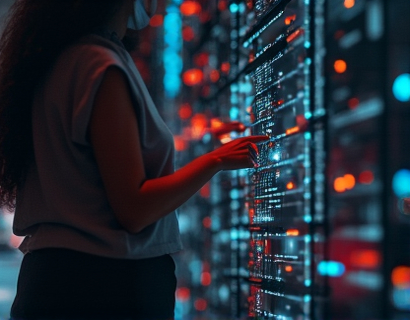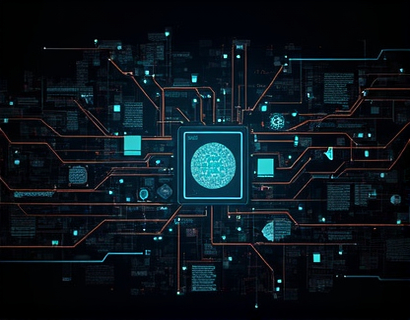Cryptocurrency Security: Elite Defense Strategies for HNWIs, Celebrities, and Entrepreneurs in the Digital Age
In the rapidly evolving digital landscape, the security of cryptocurrency assets has become a paramount concern for high-net-worth individuals, celebrities, and entrepreneurs. The allure of decentralized currencies like Bitcoin, Ethereum, and others has attracted substantial investment, but it has also drawn the attention of cybercriminals. This article delves into expertly tailored cybersecurity strategies designed to protect the digital wealth of those most vulnerable to cyber threats, ensuring advanced defense against sophisticated attacks and safeguarding sensitive information.
Understanding the Threat Landscape
The cryptocurrency sector operates in a unique and often unregulated environment, making it an attractive target for cybercriminals. The anonymity and decentralization of blockchain technology, while beneficial for privacy and security, can also be exploited. Common threats include phishing attacks, malware, ransomware, and sophisticated social engineering tactics. For HNWIs, celebrities, and entrepreneurs, the stakes are particularly high, as their digital assets can represent a significant portion of their net worth.
Phishing attacks remain one of the most prevalent threats. Cybercriminals craft convincing emails or messages that trick victims into revealing private keys or login credentials. Malware and ransomware can infiltrate systems, steal cryptocurrency, or lock access to critical data until a ransom is paid. Social engineering tactics exploit human psychology, manipulating individuals into divulging sensitive information or performing actions that compromise security.
Advanced Authentication Methods
One of the first lines of defense against these threats is implementing advanced authentication methods. Traditional password-based security is increasingly inadequate, especially for high-value assets. Multi-factor authentication (MFA) adds an extra layer of security by requiring multiple forms of verification. This can include biometric data, one-time codes sent to a mobile device, or security tokens.
For added security, hardware wallets are recommended over software wallets. Hardware wallets store private keys offline, making them less susceptible to online attacks. Devices like the Ledger Nano S or Trezor offer robust security features and are widely trusted in the cryptocurrency community. Even with hardware wallets, it is crucial to use strong, unique passwords and enable MFA.
Secure Network Infrastructure
A secure network infrastructure is fundamental to protecting cryptocurrency assets. This begins with using a dedicated and secure internet connection, ideally through a virtual private network (VPN). A VPN encrypts internet traffic, masking the user's IP address and location, making it harder for attackers to intercept data.
Firewalls and intrusion detection systems (IDS) are essential components of a secure network. Firewalls monitor and control incoming and outgoing network traffic based on predetermined security rules. IDS systems detect and alert on suspicious activities, providing real-time monitoring and response capabilities. Regularly updating and patching network devices and software is crucial to closing vulnerabilities that could be exploited by attackers.
Cold Storage Solutions
Cold storage refers to offline storage methods for cryptocurrency, which are inherently more secure than online wallets. Hardware wallets, as mentioned earlier, are a form of cold storage. Paper wallets are another option, where private keys are printed on physical paper and stored in a secure location. While paper wallets are highly secure, they are susceptible to physical theft or damage.
Brain wallets, a more advanced form of cold storage, involve memorizing a complex mnemonic phrase to generate a private key. This method eliminates the need for physical storage but requires excellent memory and caution to avoid revealing the phrase. Each cold storage method has its pros and cons, and a combination of methods can provide the highest level of security.
Regular Security Audits and Monitoring
Regular security audits and continuous monitoring are critical for identifying and mitigating potential vulnerabilities. Engaging a third-party security firm to conduct penetration testing and vulnerability assessments can reveal weaknesses in the security setup that might be overlooked by internal teams. These audits should be performed periodically, especially after significant changes to the security infrastructure.
Continuous monitoring tools can provide real-time alerts for suspicious activities, such as unusual login attempts or unexpected transactions. Implementing a security information and event management (SIEM) system can help aggregate and analyze logs from various sources, enabling quicker detection and response to security incidents.
Education and Awareness
Education and awareness are powerful tools in cybersecurity. High-net-worth individuals, celebrities, and entrepreneurs should stay informed about the latest security threats and best practices. This includes understanding the principles of secure coding, recognizing phishing attempts, and being cautious with downloads and attachments from unknown sources.
Regular training sessions and workshops can help maintain a high level of security consciousness within the organization. Encouraging a culture of security where every team member is responsible for protecting assets can significantly reduce the risk of breaches. This includes setting clear guidelines for handling sensitive information and conducting regular drills to test the effectiveness of security protocols.
Incident Response Planning
Despite the best preventive measures, security incidents can still occur. Having a robust incident response plan in place is crucial for minimizing damage and restoring operations quickly. The plan should outline clear steps to be taken in the event of a breach, including containment, eradication, recovery, and post-incident analysis.
Key components of an incident response plan include identifying incident response team members, establishing communication protocols, defining roles and responsibilities, and setting up a process for reporting and documenting incidents. Regularly updating and testing the plan ensures that the team is prepared to handle various scenarios effectively.
Legal and Compliance Considerations
For HNWIs, celebrities, and entrepreneurs, legal and compliance considerations add another layer of complexity to cryptocurrency security. Different jurisdictions have varying regulations regarding cryptocurrency ownership, reporting, and security measures. It is essential to stay informed about local and international laws and ensure compliance to avoid legal repercussions.
Engaging legal experts who specialize in cryptocurrency law can provide valuable insights and guidance. They can help navigate complex regulatory environments, ensure proper documentation, and advise on best practices for compliance. This is particularly important for businesses that handle cryptocurrency transactions or store significant amounts of digital assets.
Conclusion
Protecting cryptocurrency assets in the digital age requires a multifaceted approach that combines advanced technology, robust security practices, and continuous education. By implementing elite defense strategies tailored to the unique needs of HNWIs, celebrities, and entrepreneurs, individuals can significantly reduce the risk of cyber threats and safeguard their digital wealth. While no security measure is foolproof, a comprehensive and proactive approach can provide peace of mind in an increasingly complex and challenging landscape.










































